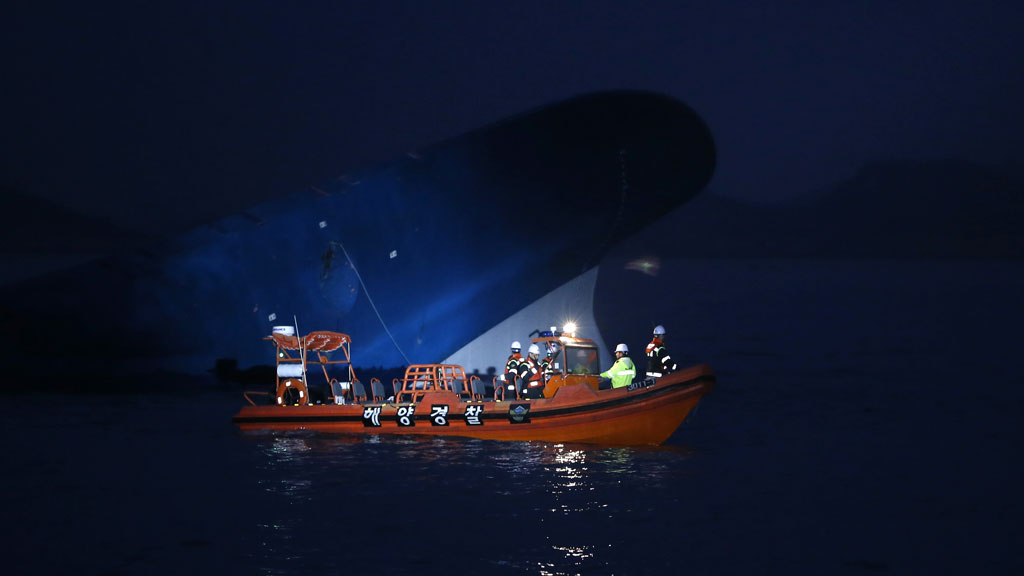South Korea: hundreds still missing after ferry sinks
Rescue teams resume their search for nearly 280 people – many of them school children – after a ferry capsizes and sinks in South Korea.
Of 462 passengers on board the ferry when it set sail from the port of Incheon late on Tuesday, 179 have been rescued and six people are known to have died.
Nearly 340 of the passengers were teenagers and teachers from the same school near the capital Seoul on a field trip to Jeju island, about 60 miles south of the Korean peninsula.
Parents of missing children faced an agonizing wait for news as they gathered in Jindo, a town close to where ferry capsized.
It was not immediately clear why the Sewol ferry had listed heavily on to its side and capsized in apparently calm waters off South Korea‘s southwest coast, but some survivors spoke of a loud noise prior to the disaster.
A member of the crew of a local government ship involved in the rescue, who said he had spoken to members of the sunken ferry’s crew, described the area as free of reefs or rocks and said the cause was likely to be some sort of malfunction on the vessel.
There were reports of the ferry having veered off its course, but coordinates of the site of the accident provided by port authorities indicated it was not far off the regular shipping lane.
‘No rescue operation’
The families of those still missing faced agonising uncertainty as divers searching for those trapped in the largely submerged ship were forced to suspend their work until daybreak on Thursday.
“My tears have dried up,” said a mother in Jindo, a town near the site of the disaster where many families have gathered.
“I am holding on to hope. I hope the government does everything to bring these kids back to their mothers.” At the dockside in Jindo, women sat and stared out at the black, calm sea before them, quietly sobbing.
The father of one missing child could not bear to wait. He said he and 10 other parents paid 61,000 won ($59) each to hire a boat to take them to the scene, along with a local reporter and a diver.
There was no rescue operation going on. I’m extremely angry – Father of missing school child
When I heard the news, it felt like my heart had stopped beating – Mother of missing teenager
“There was no rescue operation going on,” he said on his return to Jindo. “We clearly saw there is none. What they were doing at the time was stopping the oil spill. I’m extremely angry. The media says the rescue operation is still going on. It’s all a lie. It makes me so furious.”
Another mother added: “When I heard the news, it felt like my heart had stopped beating.”
‘Distress signal’
The ferry sent a distress signal early on Wednesday, the coastguard said, triggering a rescue operation that involved almost 100 coastguard and navy vessels and fishing boats, as well as 18 helicopters.
A US navy ship was at the scene to help, the US Seventh Fleet said, adding it was ready to offer more assistance.

According to a coastguard official in Jindo, the waters where the ferry capsized have some of the strongest tides of any off South Korea’s coast, meaning divers were prevented from entering the mostly submerged ship for several hours.
Adding to the sense of confusion on Wednesday, the Ministry of Security and Public Administration initially reported that 368 people had been rescued and that about 100 were missing.
But it later described those figures as a miscalculation, turning what had at first appeared to be a largely successful rescue operation into potentially a major disaster.
The ship has a capacity of about 900 people, an overall length of 480 feet and weighs 6,586 gross tons. Shipping records show it was built in Japan in 1994.